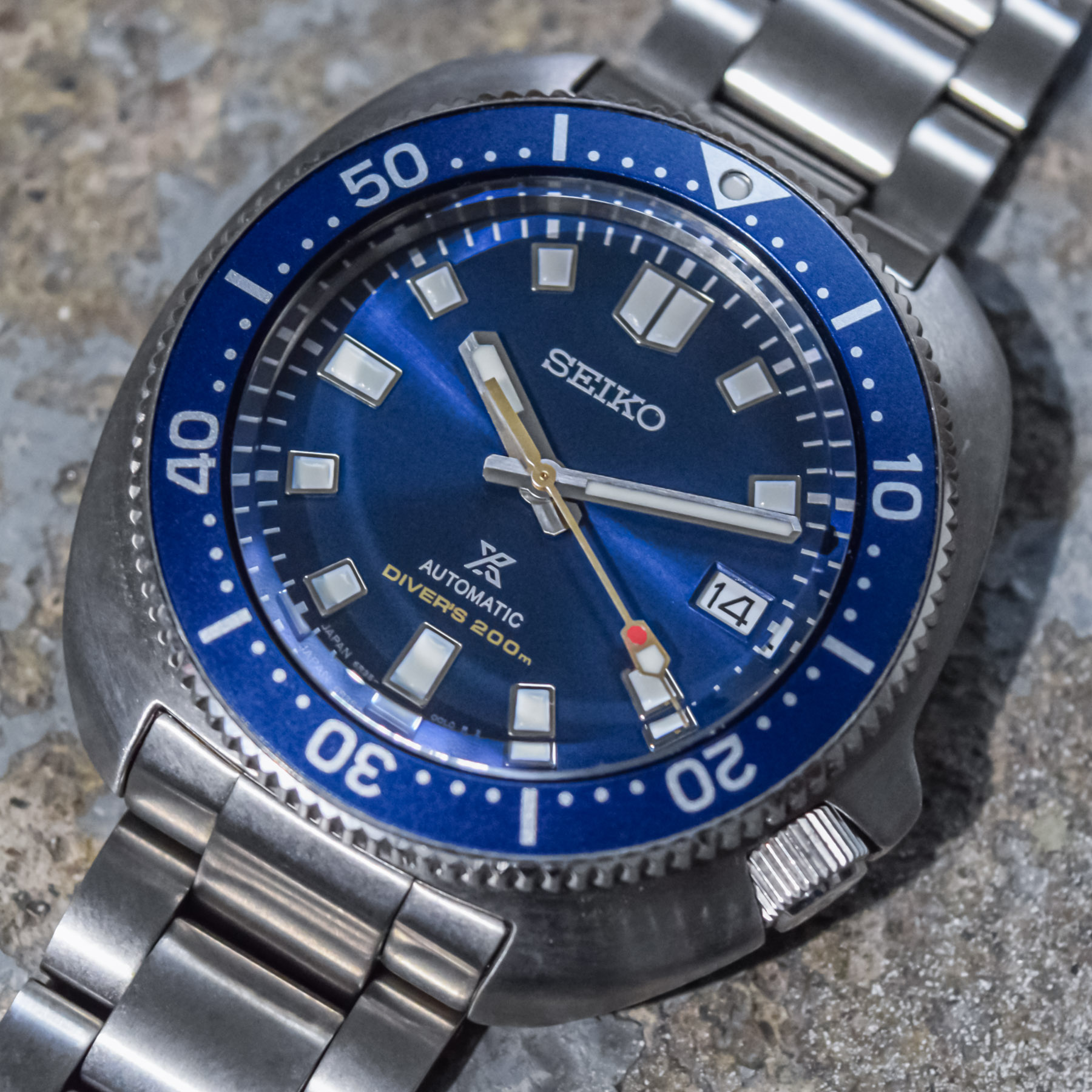 In a lot of ways, Seiko isn’t the brand it once was. The last five to ten years have found the brand catering to the enthusiast community to a never-before-seen extent, with a concurrent emphasis on higher price points and better specifications. Seiko’s celebrated dive watch collection offers an excellent example of the brand’s upmarket shift. Gone are the venerable SKX007 and 009, essentially replaced in the entry-level, ISO-certified diver category with the higher-priced SRP Turtle collection that has grown to become truly massive. After the Turtles, longtime subaquatic stalwarts of the collection including the Sumo and Samurai are even more expensive, approaching and even breaking the $1,000 threshold, in many instances. A few questions naturally emerge: Are more expensive Seiko watches a good thing? Are you getting what you pay for at this new, substantially higher price point? What do these higher price points mean for the brand and its throngs of enthusiastic followers going forward? Today, we’ll take a look at the SPB183, a limited-edition version of the long-awaited update to the Seiko 6105 “Willard” that was released in 2020 with the SPB151 and SPB153. The SPB183 is also an expensive dive watch by Japanese standards, at least, coming in at $1,400.
In a lot of ways, Seiko isn’t the brand it once was. The last five to ten years have found the brand catering to the enthusiast community to a never-before-seen extent, with a concurrent emphasis on higher price points and better specifications. Seiko’s celebrated dive watch collection offers an excellent example of the brand’s upmarket shift. Gone are the venerable SKX007 and 009, essentially replaced in the entry-level, ISO-certified diver category with the higher-priced SRP Turtle collection that has grown to become truly massive. After the Turtles, longtime subaquatic stalwarts of the collection including the Sumo and Samurai are even more expensive, approaching and even breaking the $1,000 threshold, in many instances. A few questions naturally emerge: Are more expensive Seiko watches a good thing? Are you getting what you pay for at this new, substantially higher price point? What do these higher price points mean for the brand and its throngs of enthusiastic followers going forward? Today, we’ll take a look at the SPB183, a limited-edition version of the long-awaited update to the Seiko 6105 “Willard” that was released in 2020 with the SPB151 and SPB153. The SPB183 is also an expensive dive watch by Japanese standards, at least, coming in at $1,400.
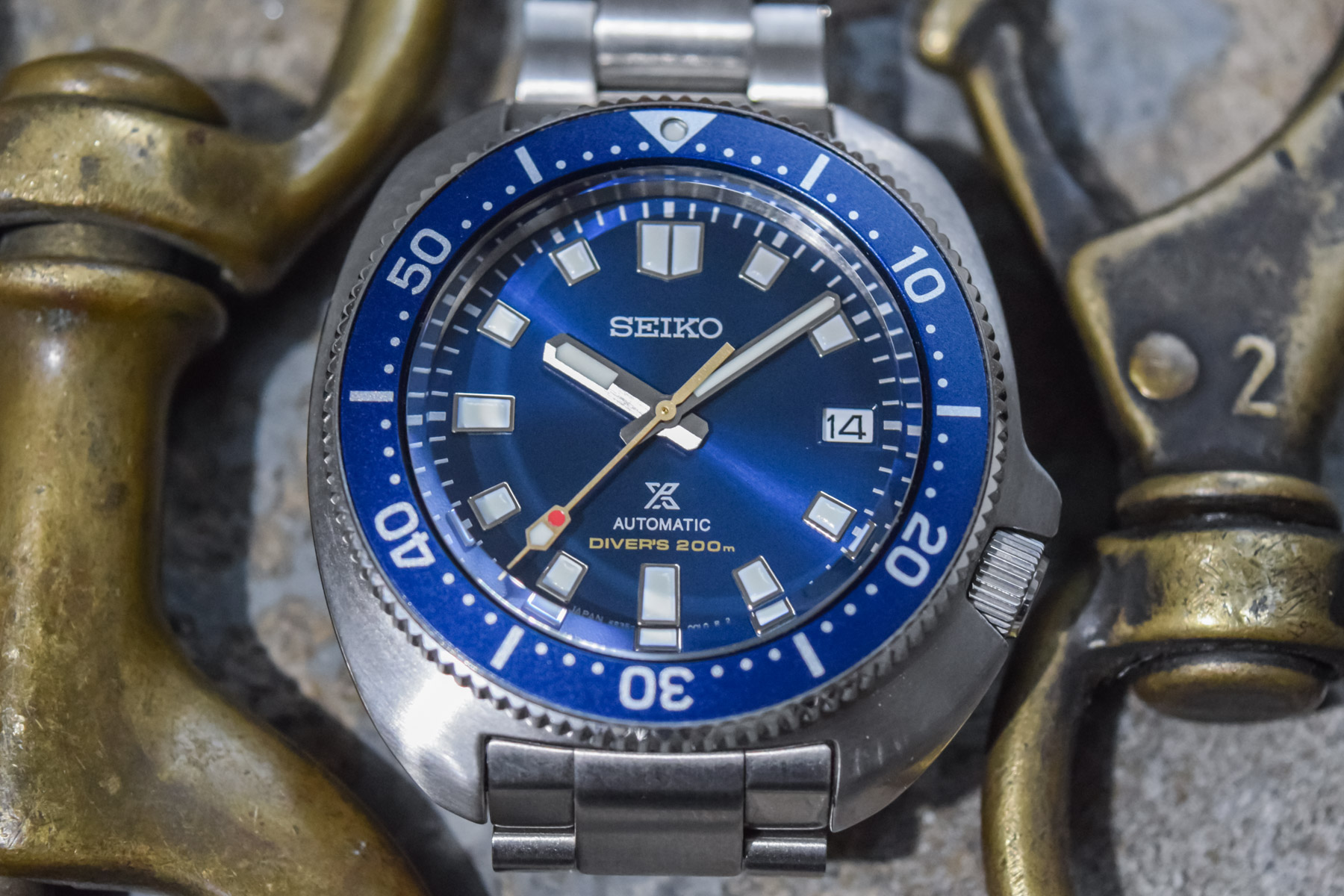 Obligatory Historical Background
Obligatory Historical Background
In the late 1960s — 1968, to be precise — Seiko unveiled the original 6015-8000 diver’s watch, only the second dive watch from the brand, with the honor of first-ever Seiko diver going to the 6217 known as the “62MAS.” Unlike the 6217, the 6105 distinguished itself with a prominent, 41mm cushion case design paired with a then-unusual four o’clock crown. By 1970, the thicker and even more sculpted 44mm 6105-8110 (or 8119, depending on the market) was presented as an update to the original design formula. Designed as a robust diver’s watch, and truly huge for its day, the legible and durable 6105 proved itself among military and commercial divers, eventually becoming a go-to for both aquatic and ground-pounding forces during the Vietnam War. The watch was also in a movie, as you’ve likely heard, but frankly, that tie-in is, at least for me, the least important thing about the original 6105 and, indeed, this modern variant.
Let’s move on. For context, the idea of the Seiko diver as an icon of affordability did not yet exist to the degree that it does today, with the 6105-8110 coming in at $100 in 1970, and something like the Rolex Submariner priced closer to $200 during the same era. And while that is indeed twice as much cheddar cheese, as they say, the difference today between the cost of the average Seiko diver and the Rolex Sub is, as you are likely aware, just a bit more extreme than that in 2022. Despite the success of the 6105, the watch was discontinued in 1977, making way for the 6309 “Turtle” that became an icon in its own right. And for all intents and purposes, that was it for the dramatically sculpted case design and refined dial that defined the 6105, with the watch representing little more than an excellent, relatively-affordable vintage option for enthusiasts for some 43 years until the rebirth of this design with the aforementioned SPB151 & 153. The 183 we’re taking a closer look at here was released the same year in a (kinda) limited run of 5500 pieces intended to celebrate the 55-year anniversary of Seiko’s history of dive watches dating back to 1965.
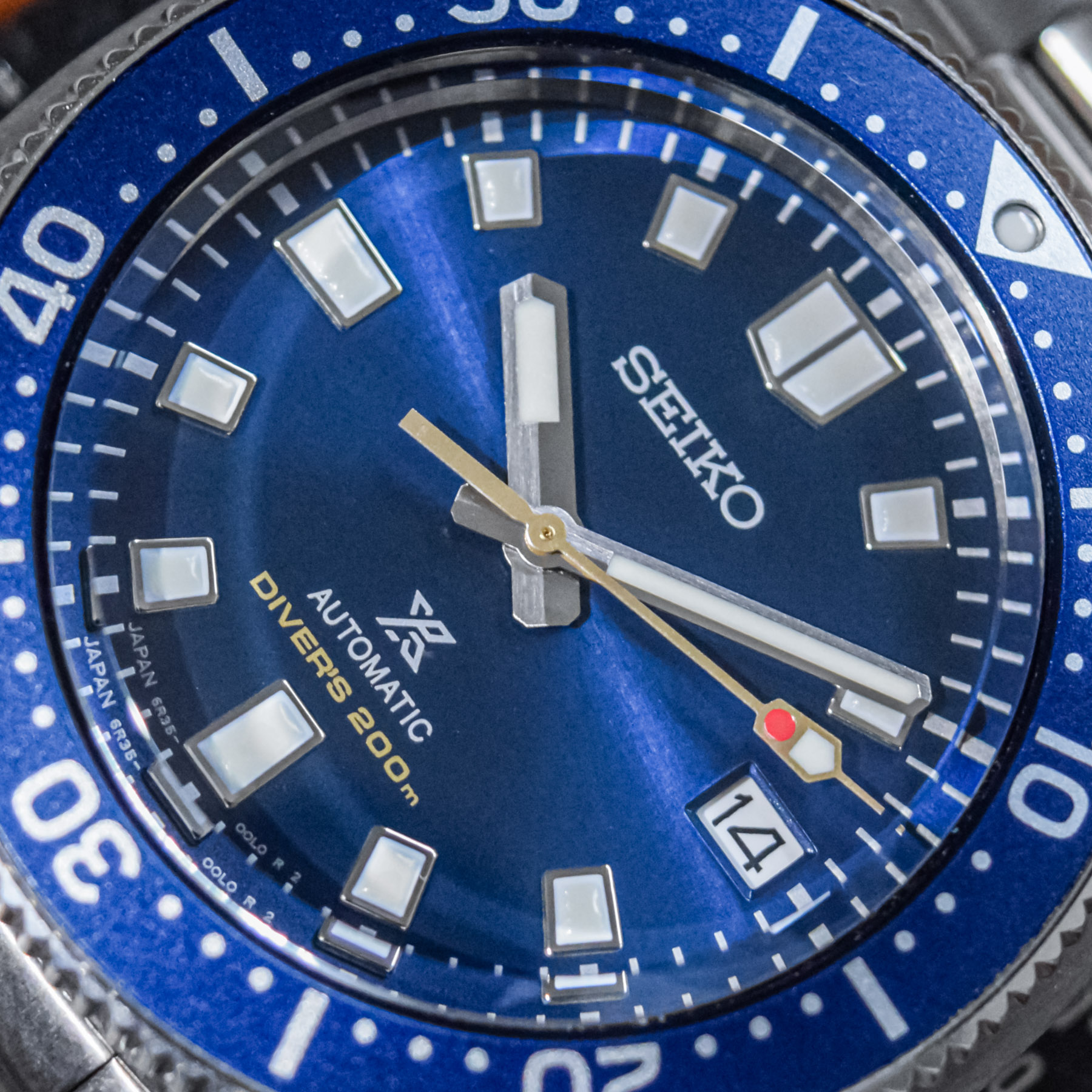 A Dial with 1970s Roots that Feels Brand New
A Dial with 1970s Roots that Feels Brand New
Set beneath the safety of a slightly-domed sapphire crystal with anti-reflective coating on the underside and a signature bevel at its edge, the somewhat limited SPB183 has a primary dial surface executed with a metallic sunray finish in a deep shade of what is almost navy blue. At the periphery, the dial omits the use of a rehaut or chapter ring, a common area of misalignment for Seiko in general, instead opting for simple printed linear markings denoting the minutes. Just within, trapezoidal applied indices manage the hours, with a doubled-up index at twelve to make orientation simple in darker environments. The handset is baton-style and demonstrates some elevated attention, with half of each hand’s faceted surface being brushed and the other polished, a small element that aids the watch in adding visual interest in changing lighting conditions. The sweeping seconds hand here is, of course, complete with a “traffic light” tip in keeping with the original design, and here presented in a matte shade of gold because the watch… is a celebration, I guess? Like other Seiko divers, the Lumibrite luminescent material on the dial-in hands is truly excellent, glowing brightly for an extended period even after a brief exposure to a light source. For whatever reason, these more expensive Seiko divers still fall behind the original Seiko Monster models in terms of overall incandescence, with those watches for me representing the gold standard in lume, but the effect and nighttime legibility is still great here, as well.
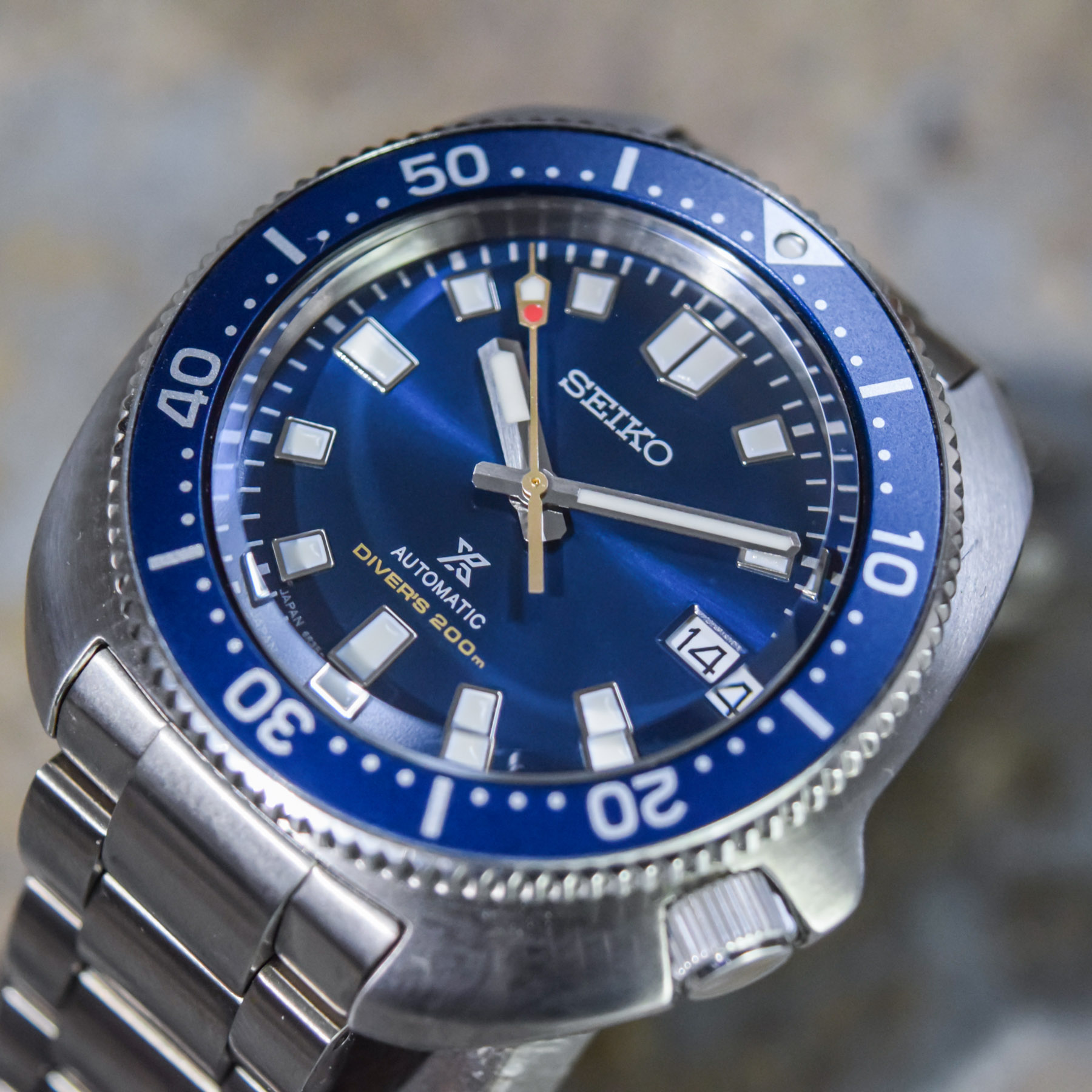 Dial text is unobtrusive and completely printed, with the brand wordmark at noon, and the Prospex “X”, “automatic”, and “diver’s 200m” at six, with the final line in gold to match the seconds hand. A faceted date window at three gives way to a simple black-on-white date wheel underneath, and this dial as a whole is legible, close enough to the original design, and compared to most other Seiko dive watches, surprisingly refined in its level of finishing. Sure, some probably hate the Prospex X at six, and it isn’t my favorite thing, either, though the dial is clean enough to not feel cluttered even considering its inclusion. Looking at this dial design as a whole, which certainly has direct vintage roots, it feels surprisingly timeless. If the original 6105 had never existed and this format was introduced, I think the enthusiast community would find it just as charming and useful, traits that carry over into the case and wearing experience offered by the 183.
Dial text is unobtrusive and completely printed, with the brand wordmark at noon, and the Prospex “X”, “automatic”, and “diver’s 200m” at six, with the final line in gold to match the seconds hand. A faceted date window at three gives way to a simple black-on-white date wheel underneath, and this dial as a whole is legible, close enough to the original design, and compared to most other Seiko dive watches, surprisingly refined in its level of finishing. Sure, some probably hate the Prospex X at six, and it isn’t my favorite thing, either, though the dial is clean enough to not feel cluttered even considering its inclusion. Looking at this dial design as a whole, which certainly has direct vintage roots, it feels surprisingly timeless. If the original 6105 had never existed and this format was introduced, I think the enthusiast community would find it just as charming and useful, traits that carry over into the case and wearing experience offered by the 183.
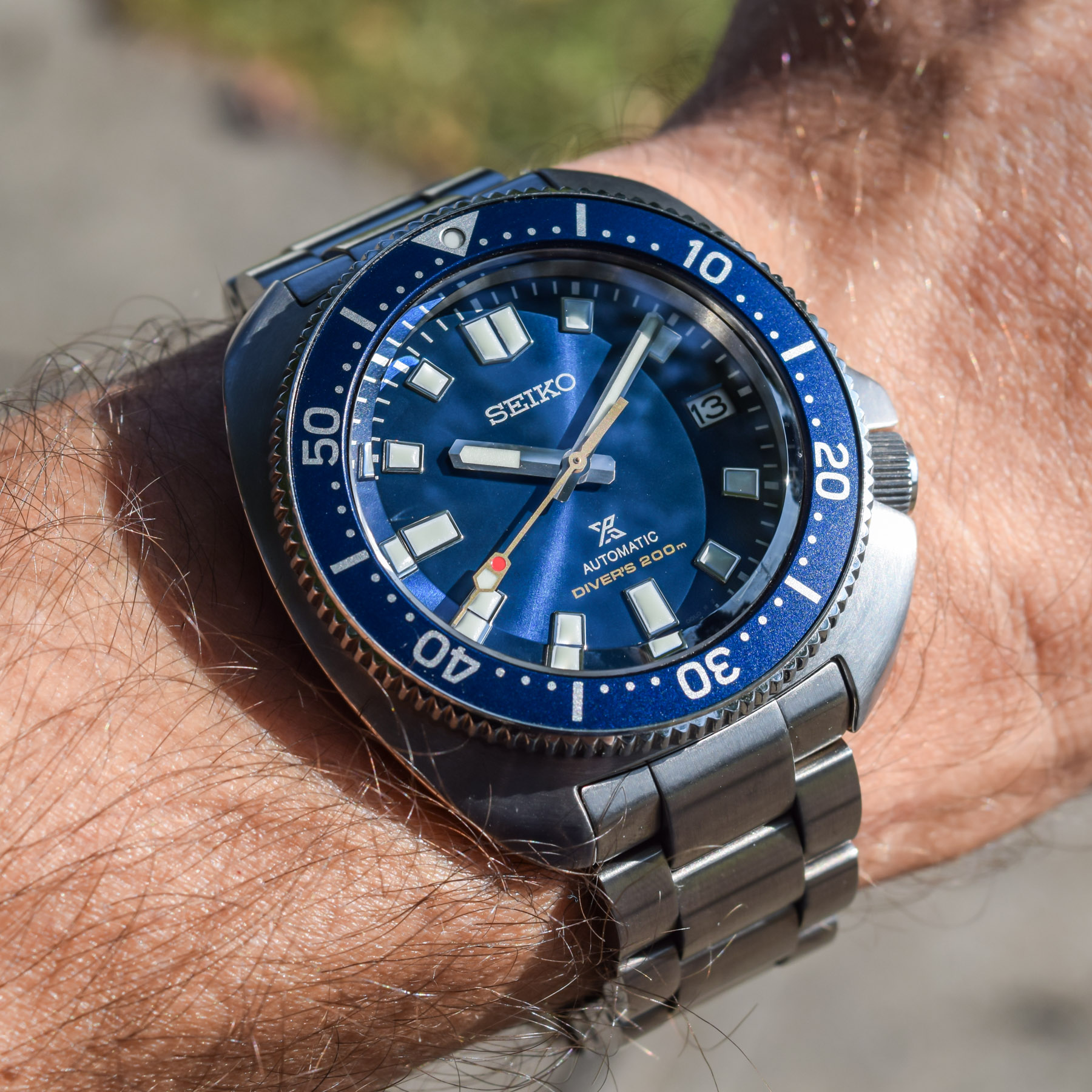 A Curiously-Downsized Case
A Curiously-Downsized Case
When the OG 6105-8110 was introduced, the elongated, cushion-style case measured in at a then (and even today) massive 44mm, a level of girth that presents a challenging wearing experience for many wrists out there, especially in the smaller watch obsessed landscape of 2022. Clear evidence the brand has ears and is capable of listening, Seiko released this update to the 6105 with a case that is indeed smaller than the original at 42.7mm in diameter and 46.6mm in length. Even on my own 6.5”/16.5cm wrist, this set of dimensions works surprisingly well, offering the presence you want (and need) from a serious dive watch without feeling like a hairy-wristed Panerai enthusiast telling someone about their recent bitcoin come-up. The thickness is surprisingly svelte as well, coming in at 13.2mm even considering the domed crystal, meaning this one wears close to the wrist and even under the majority of shirt or jacket cuffs, not that I’d call this a dress diver.
Like the dial, the finishing across the case is solid as well, with a majority of circular brushed finish on the case top and polishing along the case sides, with the two surfaces separated by a sharply executed organic bevel that travels the length of the case. At four, the distinctive crown guards that define this case shape extend from the watch almost beyond the length of the unsigned screw-down crown, which pairs with the wave engraved and domed screw-down caseback in securing this model’s 200 meters of water resistance. Resting atop the case is a 120-click unidirectional elapsed time bezel with a color-matching anodized aluminum insert that is fully demarcated for measuring dive (or other) time. The action of this bezel is excellent, easily exceeding that of less expensive Seiko dive watches, with this coin edge also featuring a hit of zaratsu polishing on the surface of the notches, a nice touch and another example of the elevated finishing presented by this piece. And as an additional note, this case is treated with Seiko’s “Super Hard” coating, meaning this steel should age more gracefully than an untreated case.
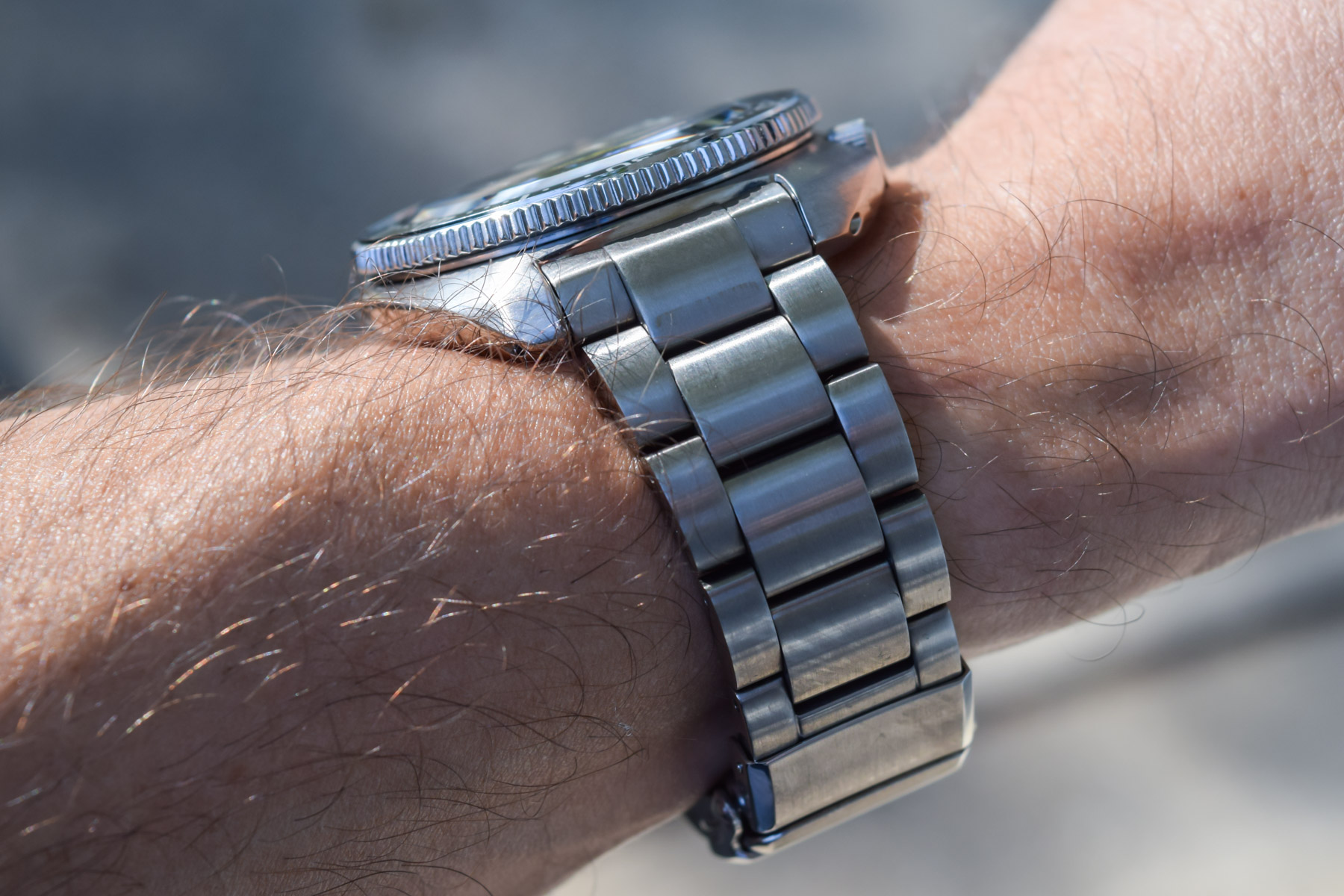 A Solid (But Weird) Bracelet
A Solid (But Weird) Bracelet
Set between 20mm lugs that are thankfully drilled, the 183 comes standard with a stainless steel bracelet with a general three-link oyster style and pin and collar adjusted links, every Seiko fan’s favorite system. The links are linear brushed on their tops and polished on their sides, tapering to an 18mm and a clasp that, while well done for the price, is frankly huge. With a stamped exterior and milled interior components, this clasp works well, looks the part, and is easy and pleasant to operate. What’s a bit strange here is the diver’s extension which rests just above the clasp on the opposite side compared to the usual, adding a bit of heft in a weird spot while also making the bracelet sit a bit weird on my wrist in this spot, though that may not be an issue for everyone. Still, it’s a nice bracelet all considered and certainly better than the majority of less expensive Seiko offers while also providing the “Super Hard” coating we mentioned from the case. Having worn the watch in regular rotation over the course of several months, I would say it works, staving off the worst of scratches while by no means making the watch as durable as something like a hardened case from Sinn, Bremont, or others. And this being a Seiko and all, we have an in-house caliber again providing additional backup for this elevated price position.
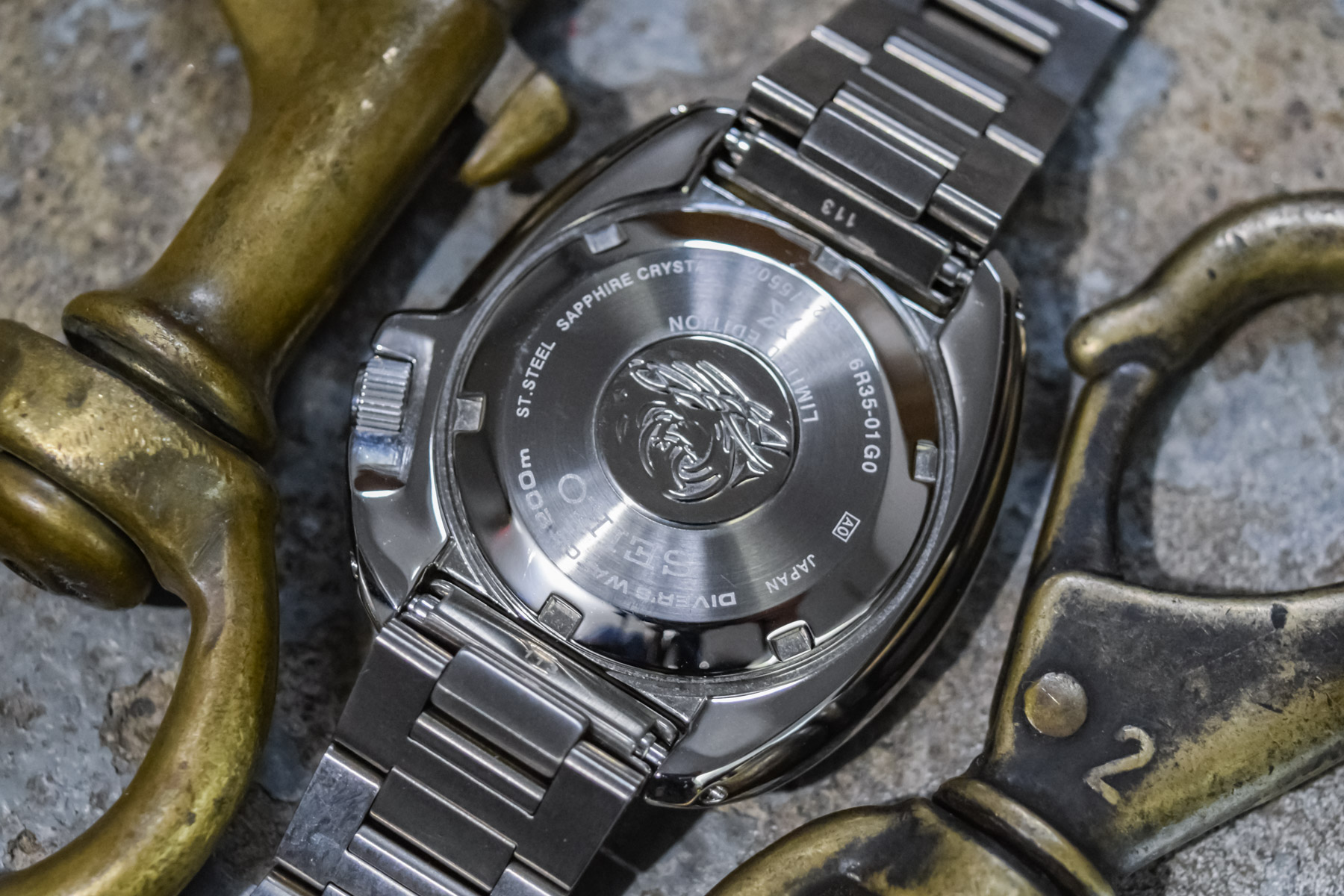 All Freakin’ Weekend, the Seiko 6R35
All Freakin’ Weekend, the Seiko 6R35
Extended power reserves are all the rage these days. The Seiko has clearly taken that messaging and run with it, with this SPB183 leaning into the 6R35 caliber that debuted back in 2019. With a traditional-for-Seiko rate of 21,600 variations per hour or 3 Hz, the 6R35 will run for 70 hours on a full charge, offering the type of power reserve that lets you take the watch off on Friday evening with confidence that it will be ready for wear Monday morning. Beyond that big move, or honestly even average move with so many brands working with longer reserves, the 6R35 is a solid caliber that has already proven itself within quite a few newer Seiko references. In terms of timekeeping, the 6R35 is rated for -15/+25 seconds per day, but like the majority of the more expensive Seiko offerings, this example was well regulated, running from around +3 to +6 when worn, which is really pretty solid. And if generations of Seiko dive watches with in-house Seiko calibers, this 6R35 is probably the kind of thing you’ll never have to worry about. And now that we have the general specs presented by the SPB183 in hand, let’s get back to those questions from the beginning.
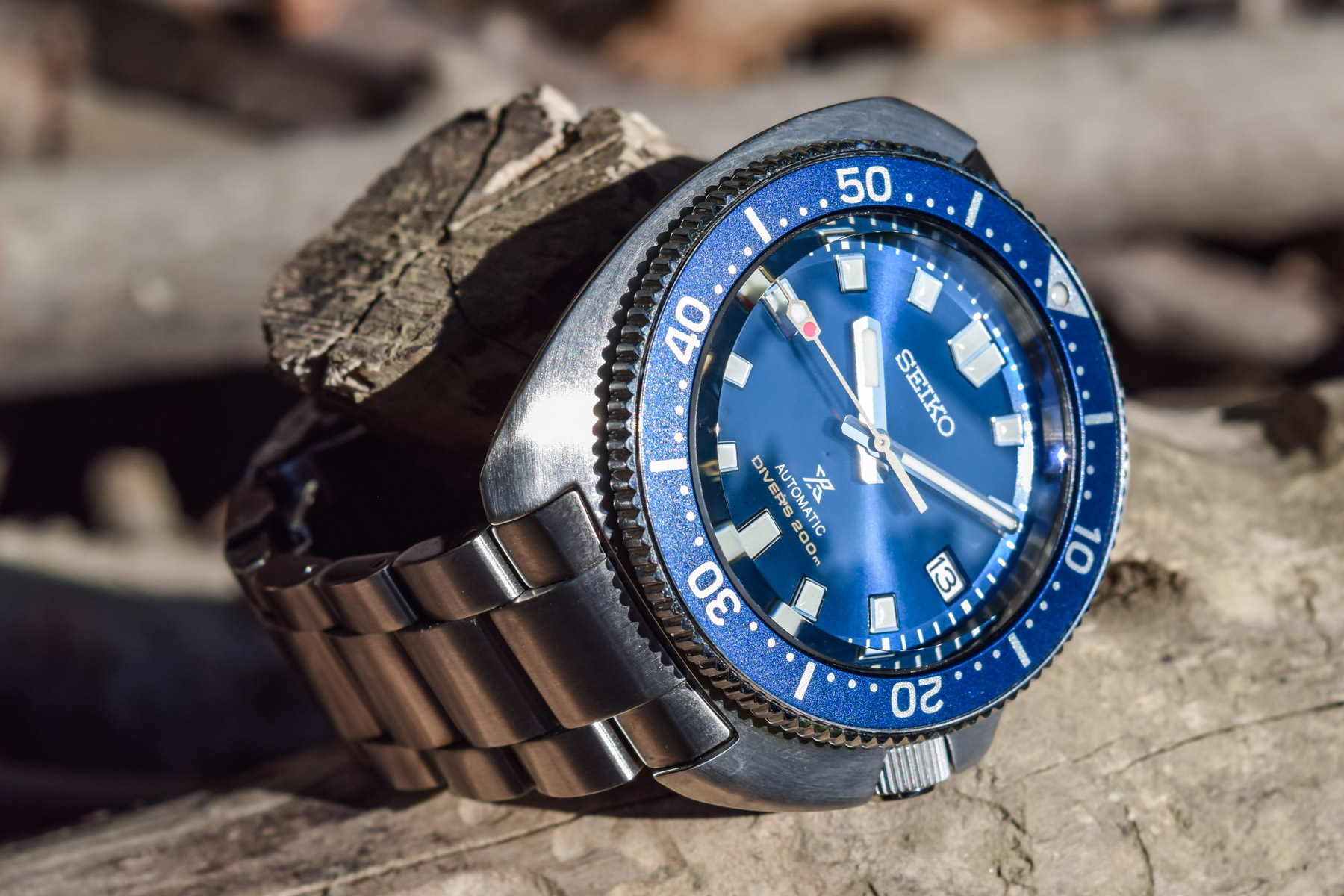 Is the Seiko SPB183 a $1,400 Watch?
Is the Seiko SPB183 a $1,400 Watch?
In the intro, I asked whether more expensive watches from Seiko are a good thing. Based on my time with the SPB183, I’m inclined to say yes. Seiko took the time to address a number of specific concerns about the original watch in this modern recreation, while also providing the most common things enthusiasts are looking for including the extended power reserve, great lume, smaller dimensions, and a sapphire crystal. The fact is that it will cost more for Seiko to be able to match enthusiasts’ more stringent expectations, a level of scrutiny the original Seiko icons, which were intended as diving tools, were never designed for in the first place. So for me, I’m happy to pay more for Seiko watches if they are willing to do more things with their collection that appeal to me, with this SPB183 being a good example of a job well done in that regard. While value is subjective, and likely the source of whatever shade awaits this article in the comments, I feel like this piece is worth its price to exactly the same degree that any watch of this price range can be from a major brand. And for those thinking, “But Japanese things should just always be cheaper than Swiss things because European people make better things than Japanese people,” that attitude is simply incorrect and has been out of date for some time.
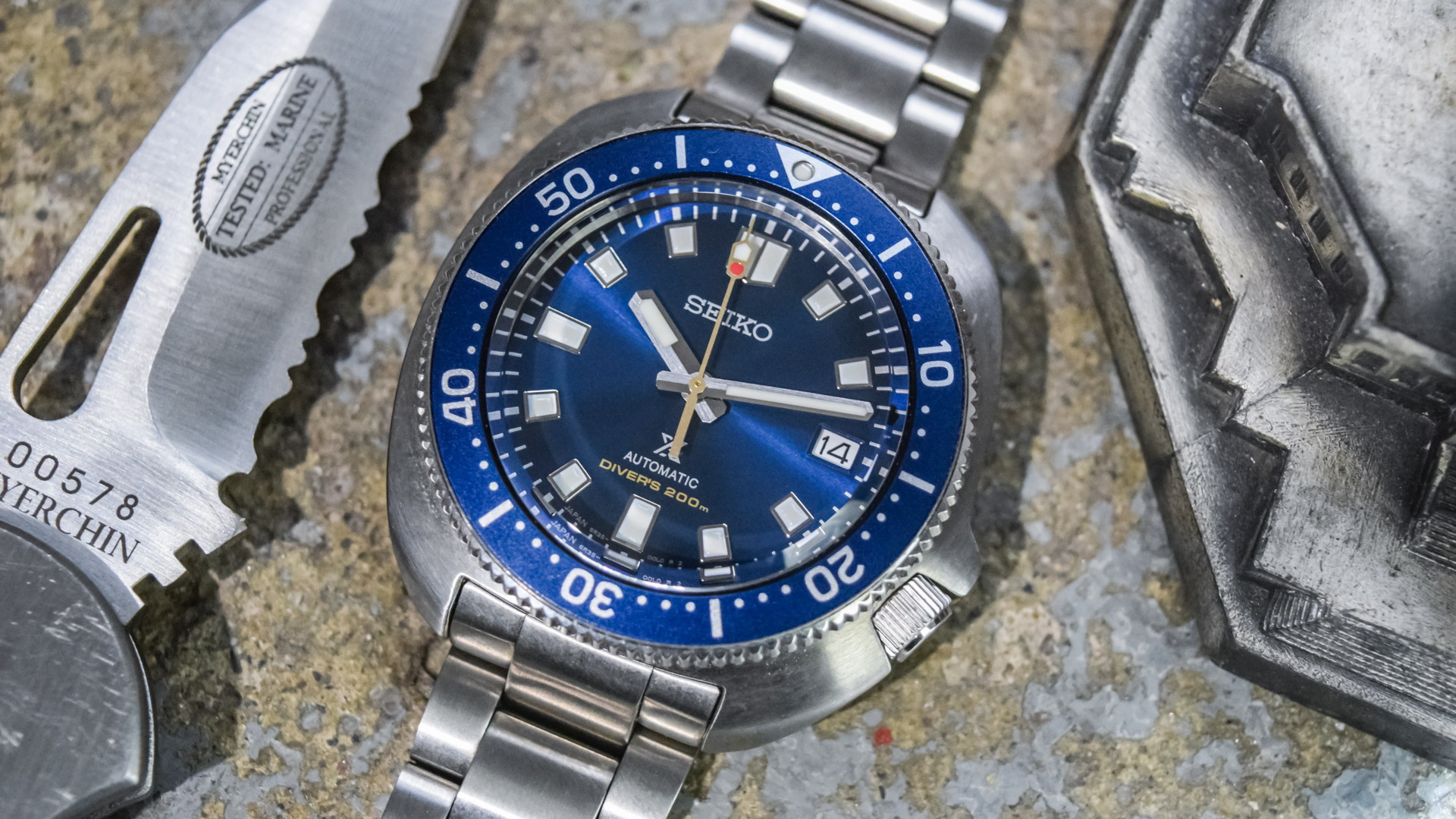
Frankly, this SPB183 is as “nice” as any Swatch Group brand dive watch in this price point when viewed from a variety of angles including the finishing, design, caliber, and wearing experience. To my last question and what a watch like this means for the brand going forward, I wouldn’t worry. Seiko understands they have a wide range of price points and market segments to please. For the true entry-level mechanical fans, the new Seiko 5 Sports collection takes up the visual design of the SKX and wears it well. For those looking for an affordable mechanical ISO-rated dive watch, the new Turtles are an excellent option that still undercuts the majority of Swiss mechanical diver options by hundreds of dollars, and for the finicky enthusiast who wants Seiko to care about what’s important to them, these higher-end Prospex watches, including this SPB183, offer a lot to like, and serve as an exciting glimpse of what could still be to come from modern Seiko. The SPB183 is available for $1,400 from seikoluxe.com.
>Brand: Seiko
>Model: SPB183
>Price: $1,400
>Size: Diameter: 42.7mm, Lug-to-Lug: 46.6mm, Thickness: 13.2mm, Lug Width: 20mm.
>When the reviewer would personally wear it: A classic dive watch that’s classy enough to be worn in more refined situations. It’s one of my go-to watches for a business-casual-ish office environment.
>Friend we’d recommend it to first: The Vietnam War history or vintage diving fan who also happens to be a watch nerd. There are a lot of these guys.
>Best characteristic of this watch: The faithful visual recreation of the iconic original design formula.
>Worst characteristic of this watch: While it’s perfectly serviceable and actually comfortable enough on the wrist, the design of the clasp is a bit strange and perhaps unnecessarily complicated.
